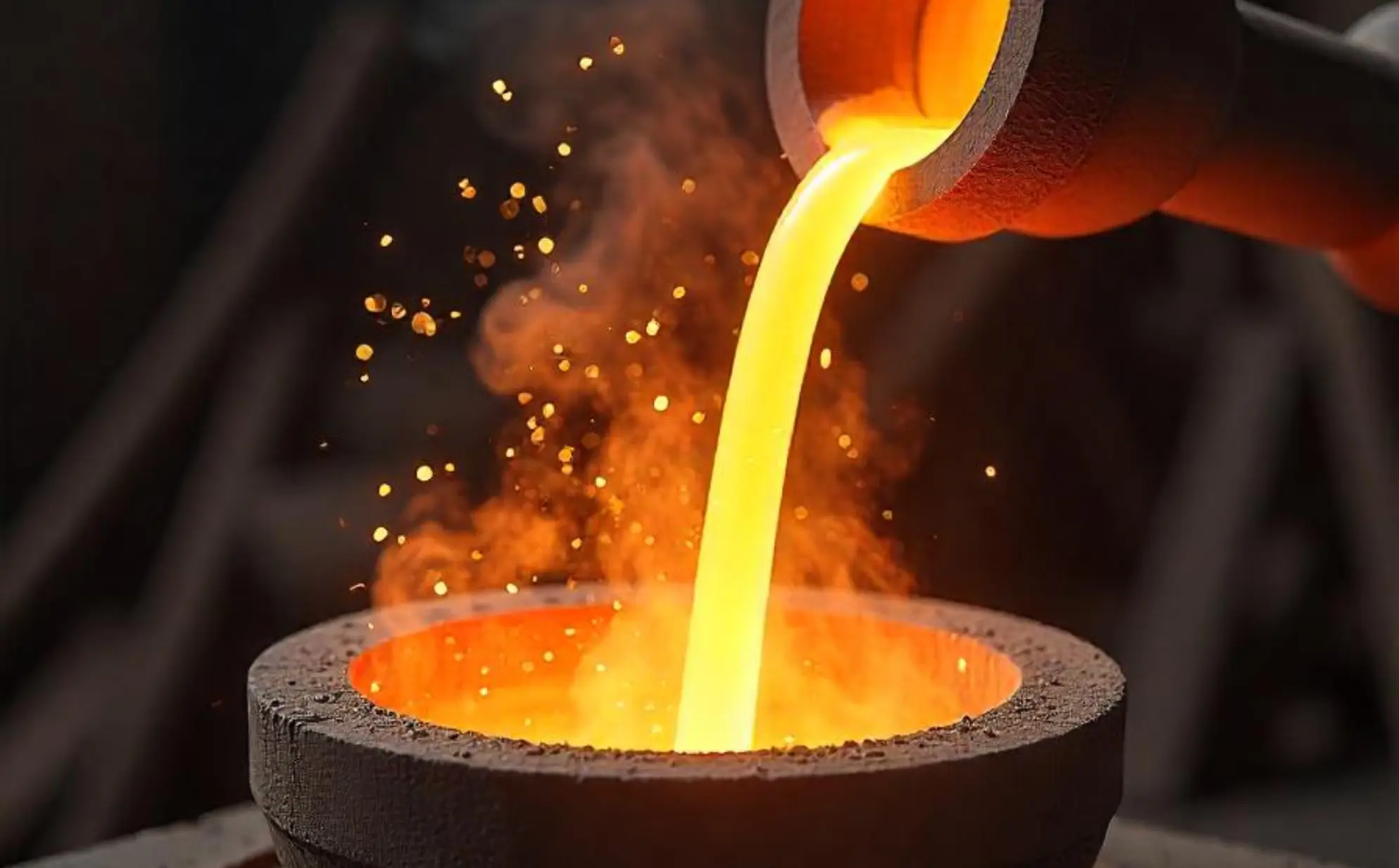What is sand casting? Sand casting is one of the most widely used metal casting processes, known for its ability to produce complex shapes with high precision. It is useful for manufacturing large metal components at an affordable cost. At Sunflame Technocast Pvt Ltd, we specialize in sand casting and shell moulding casting. We offer high-quality steel alloy products, including MS, SS, and duplex grades.
In this blog, we’ll explore what is sand casting, its process, advantages, and applications.
What is Sand Casting?
This is a metal shaping process that involves creating a mold from sand and pouring molten metal into it. After cooling, the sand mold is broken away, revealing the finished product. This method is widely used in industries like automotive, aerospace, and machinery manufacturing.
The Sand Casting Process: Step by Step
The casting process consists of several essential steps:
1. Pattern Making
A pattern is a replica of the final product used to create the mold cavity. It is typically made from wood, plastic, or metal and includes allowances for shrinkage during cooling. The pattern can be solid or split into two halves, known as cope and drag.
2. Mold Preparation
The mold is prepared using silica sand mixed with a binding agent. The sand is compacted around the pattern in a flask, forming the desired cavity shape. Once the pattern is removed, the mold is ready for metal pouring.
3. Core Making (If Needed)
For complex shapes with internal cavities, a sand core is placed inside the mold. Cores are made using a different sand mixture and are removed after casting to form hollow sections in the metal part.
4. Metal Melting and Pouring
The required metal alloy is heated in a furnace until it becomes molten. Common materials include:
- Mild Steel (MS) – Used in construction and industrial applications.
- Stainless Steel (SS) – Preferred for its corrosion resistance.
- Duplex Steel – Offers high strength and durability.
The molten metal is carefully poured into the sand mold using a gating system, ensuring a smooth and controlled flow.
5. Cooling and Solidification
Once the mold is filled, the metal cools and solidifies, taking the exact shape of the mold cavity. The cooling rate can be controlled to achieve the desired mechanical properties.
6. Mold Breakage and Casting Removal
After cooling, the sand mold is broken apart to remove the solid metal casting. The remaining sand is usually recycled for future castings.
7. Cleaning and Finishing
The raw casting undergoes cleaning processes like shot blasting, grinding, and machining to remove excess material, improve surface finish, and meet dimensional accuracy.
8. Quality Inspection
The final step includes visual inspection, dimensional checks, and non-destructive testing (like ultrasonic or X-ray testing) to ensure the casting meets quality standards.
Advantages of Sand Casting
Here are several key benefits:
- Cost-Effective Production – This process is suitable for both small and large manufacturing runs.
- Design Flexibility – Can create intricate shapes and large components.
- Material Versatility – Works with a wide range of metals and alloys.
- Eco-Friendly Process – Sand is recyclable, reducing waste.
Applications of Sand Casting
Sand casting is used in a variety of industries:
- Automotive Industry – Engine blocks, transmission cases, and brake components.
- Aerospace Industry – Aircraft engine parts and structural components.
- Heavy Machinery – Pump casings, valve bodies, and gear housings.
- Construction Industry – Architectural elements and large metal structures.
What is Shell Moulding Casting?
Shell moulding is a variation of sand casting that uses a thin-shell mold made of resin-coated sand. Also, provides better surface finish and dimensional accuracy than traditional sand casting.
Shell Moulding Process
- Pattern Coating – A metal pattern is heated and coated with a special resin-sand mixture.
- Shell Formation – The resin hardens into a shell-like structure around the pattern.
- Mold Assembly – The shell halves are joined to create the mold cavity.
- Metal Pouring – Molten metal is poured into the shell mold.
- Cooling & Removal – After solidification, the shell is broken away, revealing the casting.
Shell moulding is ideal for high-precision components like gears, turbine blades, and pump parts.
Conclusion
Now what is sand casting is not a question anymore. Sand casting is an essential manufacturing process for industries requiring cost-effective, versatile, and high-quality metal components. Automotive, aerospace, or heavy machinery, this process ensures efficiency and reliability. At Sunflame Technocast Pvt Ltd, we provide customized solutions tailored to industry needs.
Want to learn more about how sand casting can benefit your business? Contact us today!



